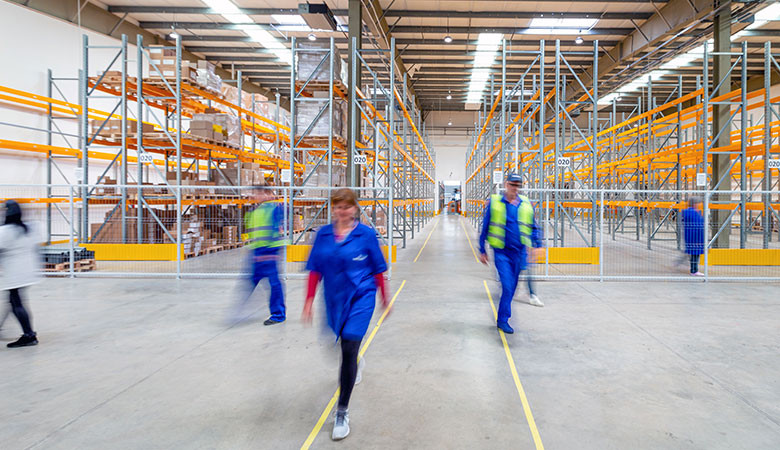Lavagem Industrial / Artigos
6 tips to optimize your company’s supply chain
Discover 6 practical tips to optimize your company’s supply chain, from improving communication to choosing suppliers.

 8 minutos de leitura
8 minutos de leitura
2024-03-08 12:46:45
There is no such thing as a perfect supply chain. What does exist is a goal: to deliver the right product, when it’s needed, with the expected quality, at the lowest cost and, if possible, faster than the competition. Between ambition and reality, most companies struggle with an array of issues: miscommunication, bad weather, complex processes, lack of training, rising costs, unreliable equipment and even geopolitics. Factors that turn any supply chain, no matter how simple it may seem, into a Swiss watch with countless parts in constant motion, in constant need of monitoring, while demanding an uncanny ability to adapt and, above all, a laser focus on continuous improvement. The good news is that all companies, regardless of their size or sector, can learn from decades of accumulated experience from other organizations. Discover 6 tips for optimizing the supply chain that make a difference.
1. Avoid the “bullwhip” effect along the supply chain
Procter & Gamble was one of the first multinationals to study in depth the impact of variations in demand throughout its supply chain. In the early 1990s, they coined the term “bullwhip effect” to describe how small fluctuations in consumer demand led to increasingly large changes in retailers, distributors, manufacturers and, finally, raw materials suppliers. Conclusion: the further away a supplier is from demand, the more significant this effect is, which inevitably leads to increasing swings in inventories.
The “bullwhip” name is essentially due to two reasons. First, the first movie in the Indiana Jones saga had just come out. Second, the physics of cracking a whip – a sleight-of-hand causes ripple effects that amplify more and more in a chain reaction.
The solution? Keep communication channels open between every player in your supply chain, to improve throughout and prevent the spread of delays and errors. This ensures greater overall efficiency.
To do this, set up a system that allows you to visualize the entire supply chain and monitor the flow of products in real time. For example, ERP (Enterprise Resource Planning) systems centralize data and processes, allowing for more efficient communication between all parties involved. Also use collaborative online portals to share critical information with suppliers, manufacturers and distributors, such as demand forecasts, stock levels and production schedules.
2. Make long-term partnerships
Forging long-term partnerships with suppliers is an essential to optimize the supply chain, especially in sectors where product quality and speed are critical. It was precisely this principle that led Toyota and its most important suppliers to create virtually adjacent factories in the post-war period, an innovative practice at the time that has since become widespread in the automotive sector.
Strategic partnerships are based on criteria such as quality, on-time delivery, reliability, transparent communication, and compliance with ethical and environmental standards. Choose suppliers with consistent quality standards, who are also committed to continuous improvement. Also, make sure that the objectives of both parties are aligned, so that the partnership is as collaborative as possible.
3. Implementing traceability practices
Traceabiltiy is abuzz with major legislative changes. The US Food and Drug Administration’s (FDA) has issued a proposal to require all participants in the food value chain to keep electronic records on the status of products, to be made available on request within 24 hours during a foodborne outbreak or food investigation. The EU has already taken the first steps: the Corporate Sustainability Reporting directive, in force from January 2024, requires large companies operating in the EU to disclose new information on environmental and social risks. This includes data that will make it possible to trace products from raw materials to the end product.
Implementing traceability practices is crucial to optimize the supply chain. In the food and hospitality sector, this is even more so, to guarantee the quality, integrity and safety of products. For example, technologies such as barcodes, RFID (Radio Frequency Identification) and sensors can track products in real time. Then you’ll have instant access to the location and status of all products. And even in the event of a recall, you’ll be able to quickly identify the batches affected, reducing the impact on consumers and improving the efficiency of the whole process.
4. Planning and forecasting
Every company needs a way to forecast demand in order to manage resources more efficiently, reduce costs and ensure that there is enough stock to meet customer needs. Historical data, market trends, seasonality and external factors help to make this forecast and, consequently, avoid excess or lack of product.
It is also important to constantly assess whether production and storage capacity is aligned with forecast demand, and to ensure that there enough flexibility to adapt to changes in production volumes and product mixes.
5. Automate processes
Automation in the supply chain is especially important to reduce dependence on manual tasks, speed up processes and eliminate potential human errors. Automation can be applied at any stage, be it real-time tracking, stock management or order processing.
Take advantage of management software or automated processes for washing, product packaging and delivery. Set up automated alerts for critical situations such as low stock levels, production delays or interruptions in the supply chain. What’s more, when maintenance processes are automated, you can identify and correct potential problems before they occur.
6. Proactive risk management
Proactive risk management is a best practice for optimizing the supply chain, as it helps to identify, assess and mitigate potential threats and disruptions before they significantly impair operations. Start by identifying risks to your supply chain, such as supply disruptions, geopolitical instability, natural disasters and other unforeseen events.
Then, assess the potential impact of each risk identified and develop contingency plans accordingly, with specific actions to ensure a rapid and effective response. Avoid being overly dependent on certain suppliers, regions, equipment, raw materials or technologies for which there are no alternatives. Diversifying reduces the impact of potential problems on a specific source and increases the resilience of overall supply chain.
MultiWasher, advanced industrial washing technology
Optimizing your supply chain is a complex task that requires a comprehensive and strategic approach. By integrating these practices, companies can achieve a more efficient supply chain, which is more prepared to adapt to changing market conditions.
The choice of industrial washing machines has a significant impact on operational efficiency, and consequently on the supply chain. MultiWasher’s state-of-the-art washing equipment relies on automated processes to ensure that raw materials, components, materials or any other are available for production.
Get in touch with our expert team and see for yourself how MultiWasher can make a difference to your supply chain, increasing efficiency, quality of service and customer satisfaction.
Também pode gostar

Lavagem Industrial / ArtigosArtigos
Food sustainability: what it is and why it matters
More than a buzzword, food sustainability is a global emergency. This is what it means, why it is important and how companies can take action
Postado em 2022-04-28

Lavagem Industrial / ArtigosArtigos
Fispal: journey to the heart of innovation
Somengil was at Fispal, the largest meeting in the food and beverage sectors in Latin America. Discover the latest news.
Postado em 2023-08-25























 Português
Português English (UK)
English (UK) English (USA)
English (USA) Français
Français Español
Español Deutsch
Deutsch